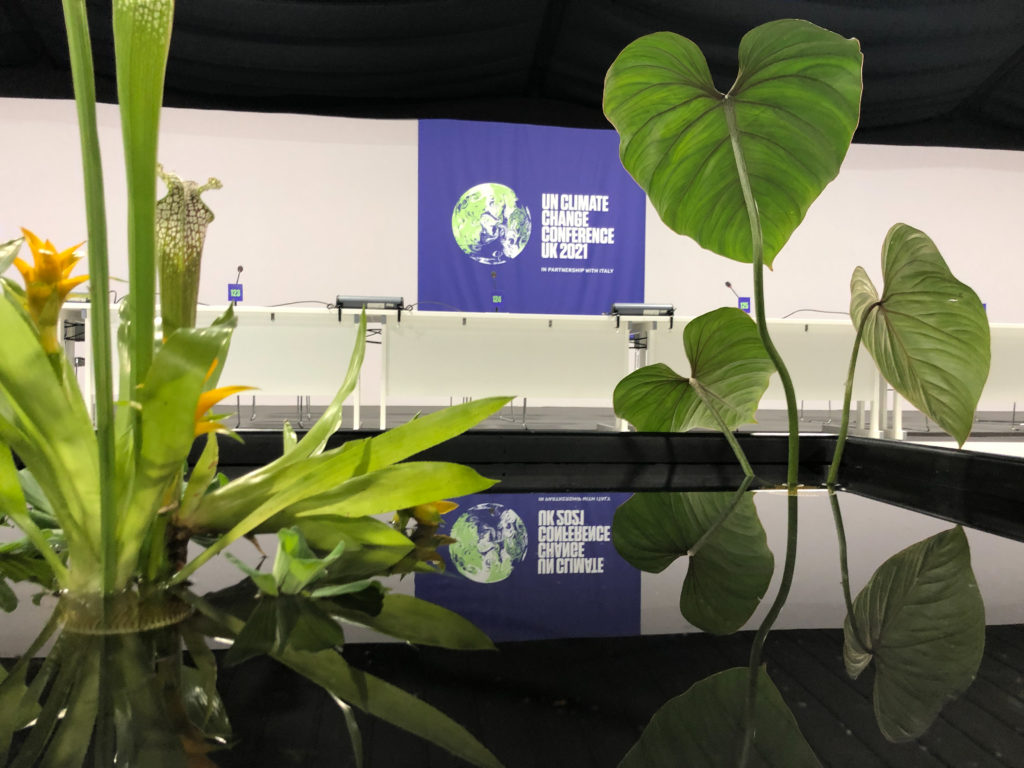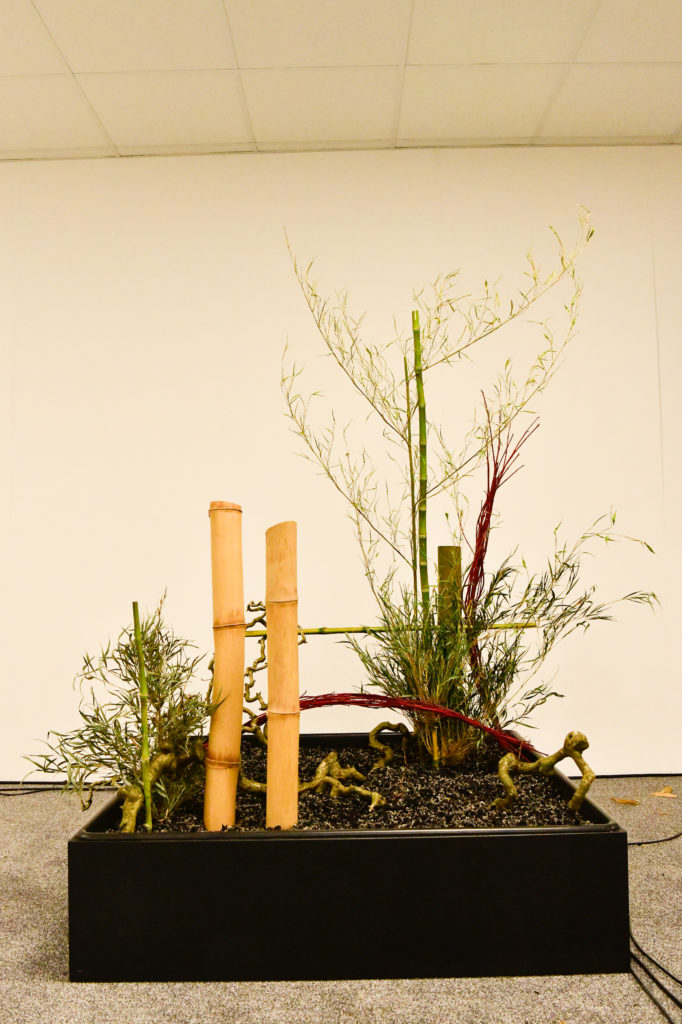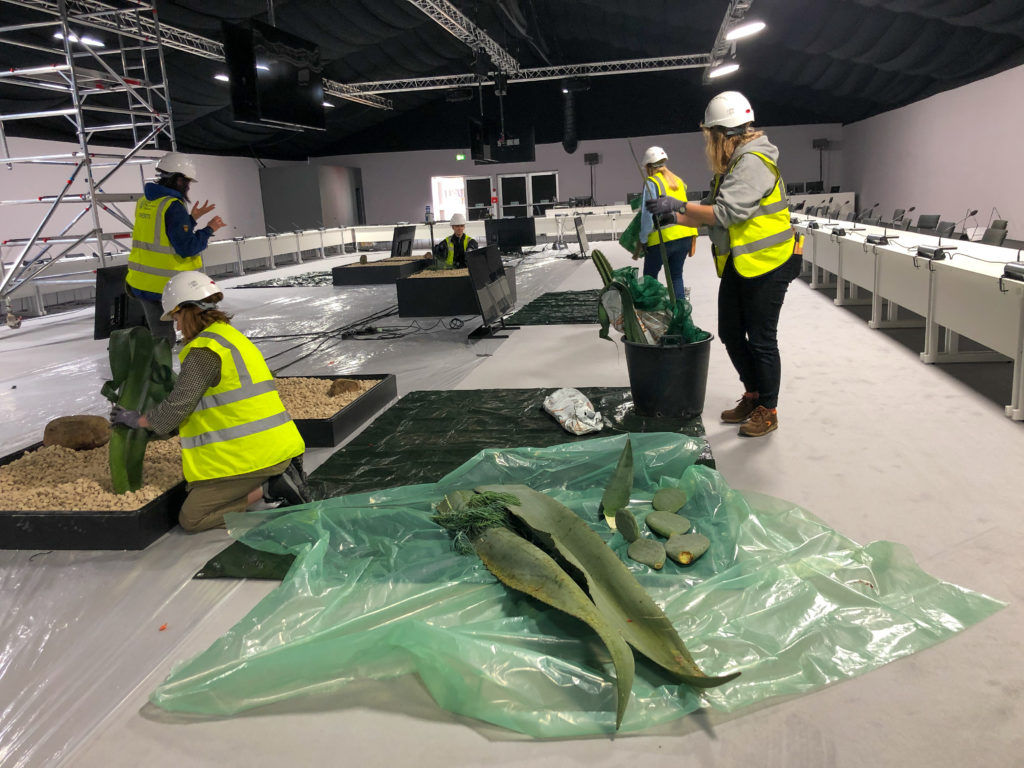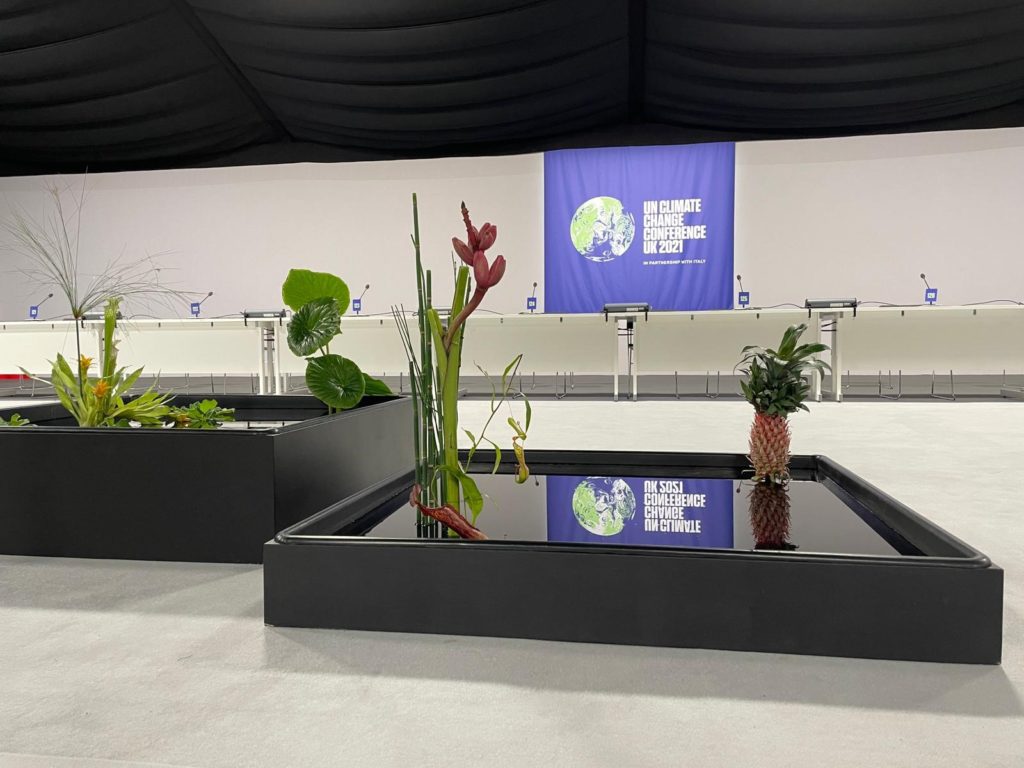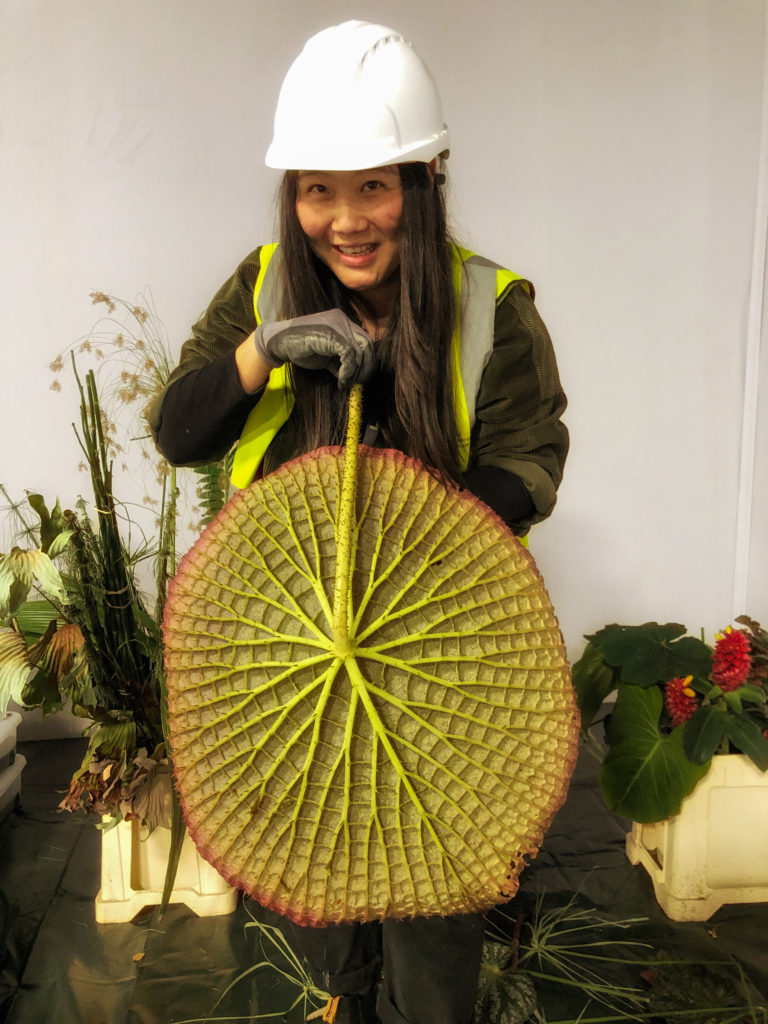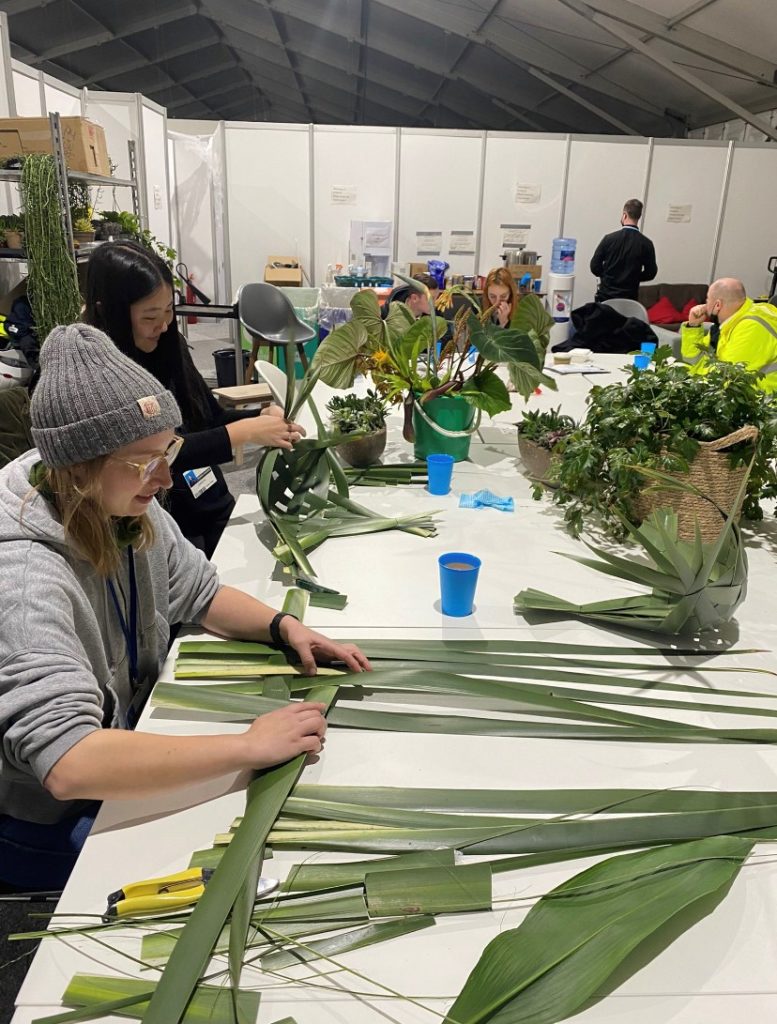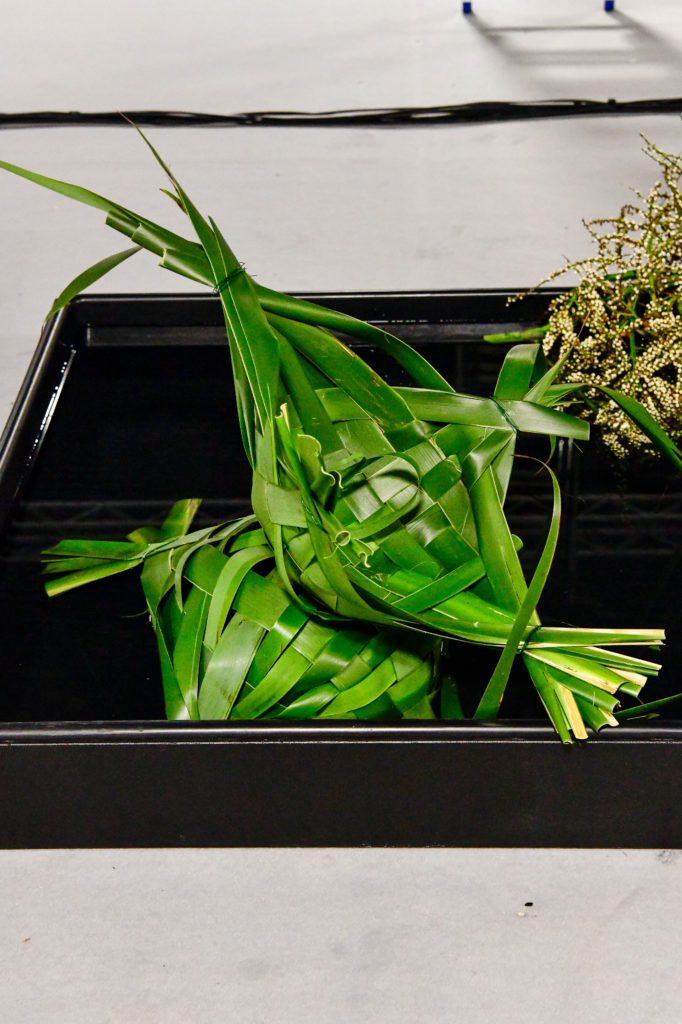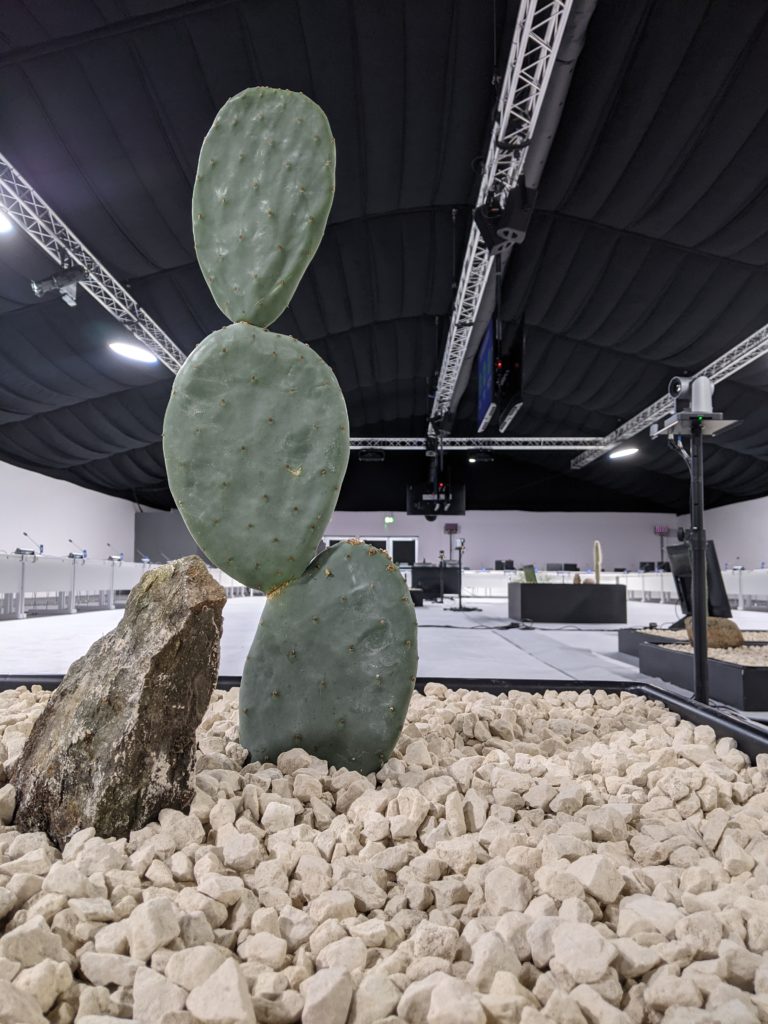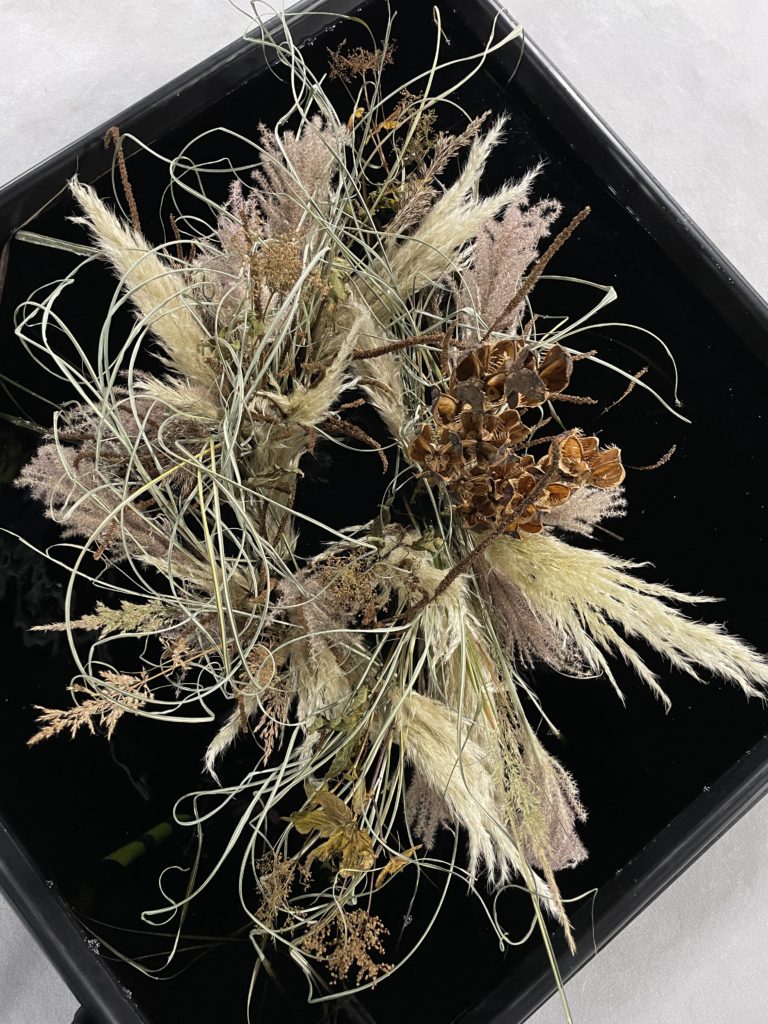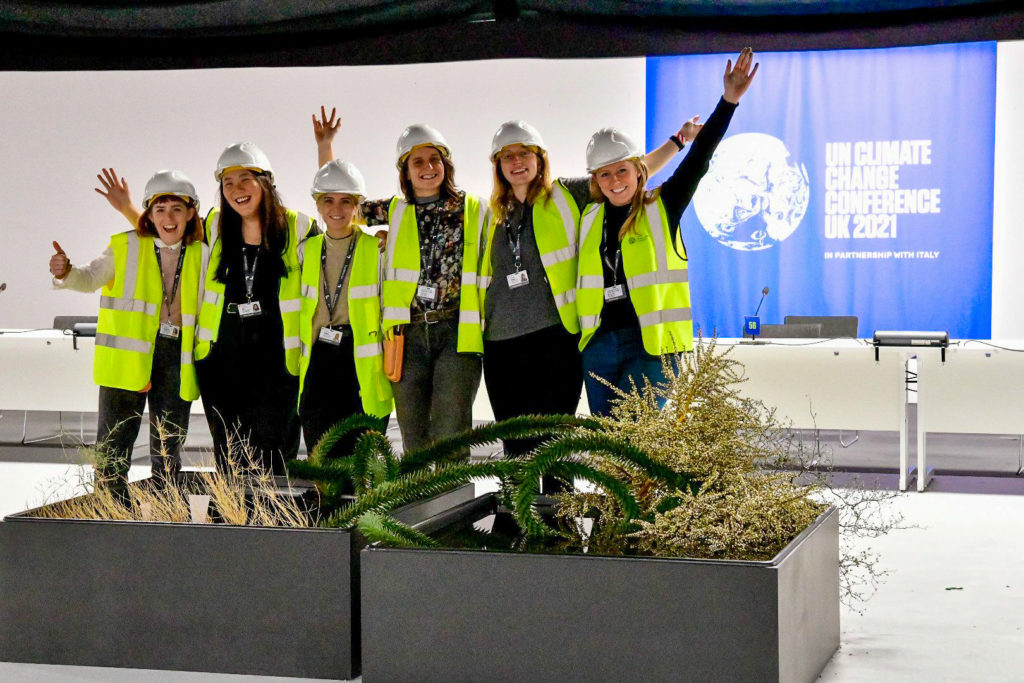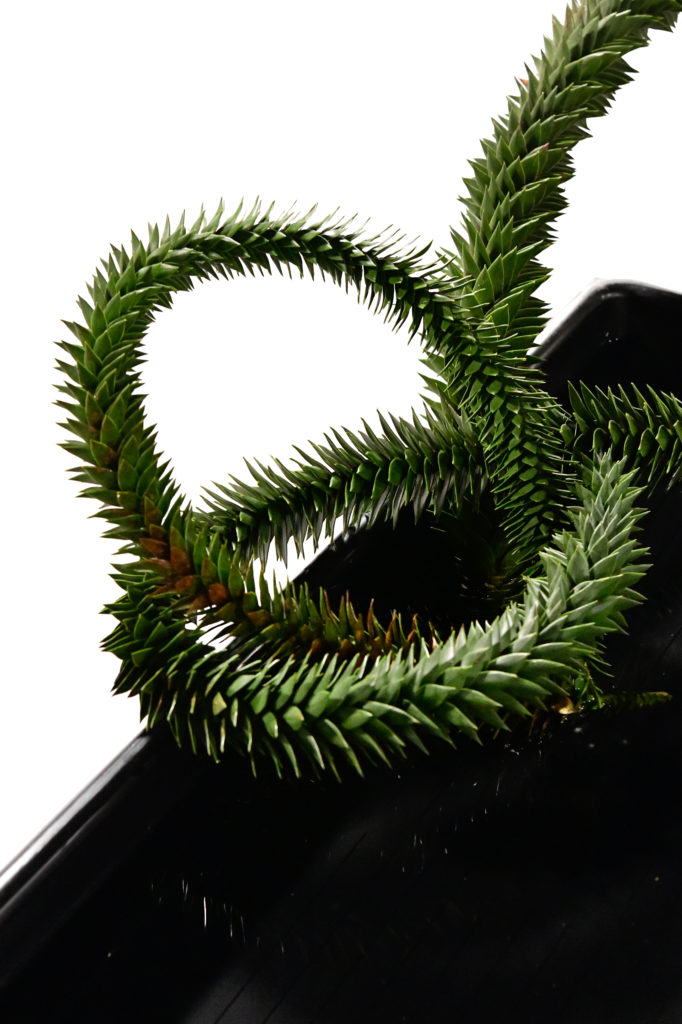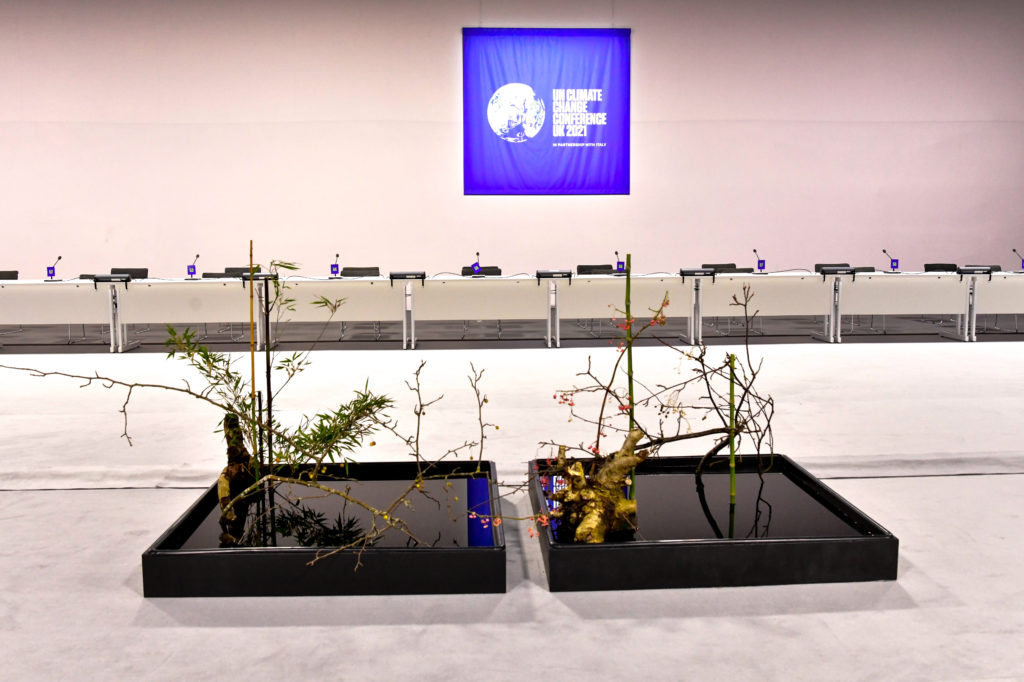During the United Nations COP26 in Glasgow during November 2021 we created thought-provoking displays of global plant life across 10 negotiating rooms with 55 individual displays. They each represented a climatic biome of the world and highlighted our message that nature is one of the solutions to climate change. We selected botanical Ikebana inspired displays which were used to remind delegates of the importance of plants globally and how all life depends on plants.
Ikebana style -Ikebana (生花) means living flowers. The Japanese art of flower arranging has been described as being at once more subtle, more sensitive, and more sophisticated than the methods of arranging flowers usually employed in other cultures. Viewed as art in Japan in the same sense that painting and sculpture are arts elsewhere.
The cut plant material was foraged from the RBGE Living Collections in Edinburgh including one of our regional gardens, Logan Botanical Garden in South West Scotland, and material from Nature Scot sites. We scaled up our arrangements and placed them in impressive 1.2m x 1.2m containers made from recycled plastic. To hold the plant material in place we used branches and Japanese kenzans. Kenzans, also known as floral frogs, are made of metal. They are a sustainable floristry alternative to toxic floristry foam. Floristry foam does not biodegrade and can kill marine life if allowed to get into our oceans.
Installing and designing these installations at COP26 was tricky and certainly logistically challenging. Each room was warm, displays had to last three weeks and we had UN security and camera restrictions to take into consideration. We worked with Cynthia Fan, a Phd student at RBGE who also has a hidden talent for Ikebana floral art. Cynthia led on the designs that we installed and helped us bring the displays to life for the important delegates. Horticulturists from RBGE helped forage material and assist with the installation in Glasgow through the long hours of the construction. Many of the designs had water for a reflective quality whereas in the desert biome we used dry gravel and rocks to give a different arid feel to the displays. We also used a traditional method of weaving baskets made from Phormium tenax, also known as New Zealand flax. To our delight we were also able to showcase unusual plants including a pink pineapple (Ananas fritzmuelleri) and pink bananas (Musa velutina) foraged from the incredible glasshouse collections at RBGE. We had to return on two following weekends to maintain the displays even working way into the small hours as we could not access the rooms until evening meetings for delegates were completed.
In conclusion it was a rewarding experience making these Ikebana installations for COP26 and showcasing RBGE’s Living Collections on a global stage. As horticulturists we can only hope that the delegates were inspired and motivated to save our planet’s future for a more sustainable green future.
After all plants really are the basis of all life on earth as they provide us with oxygen, food, shelter and medicine. Without them there is no life.

